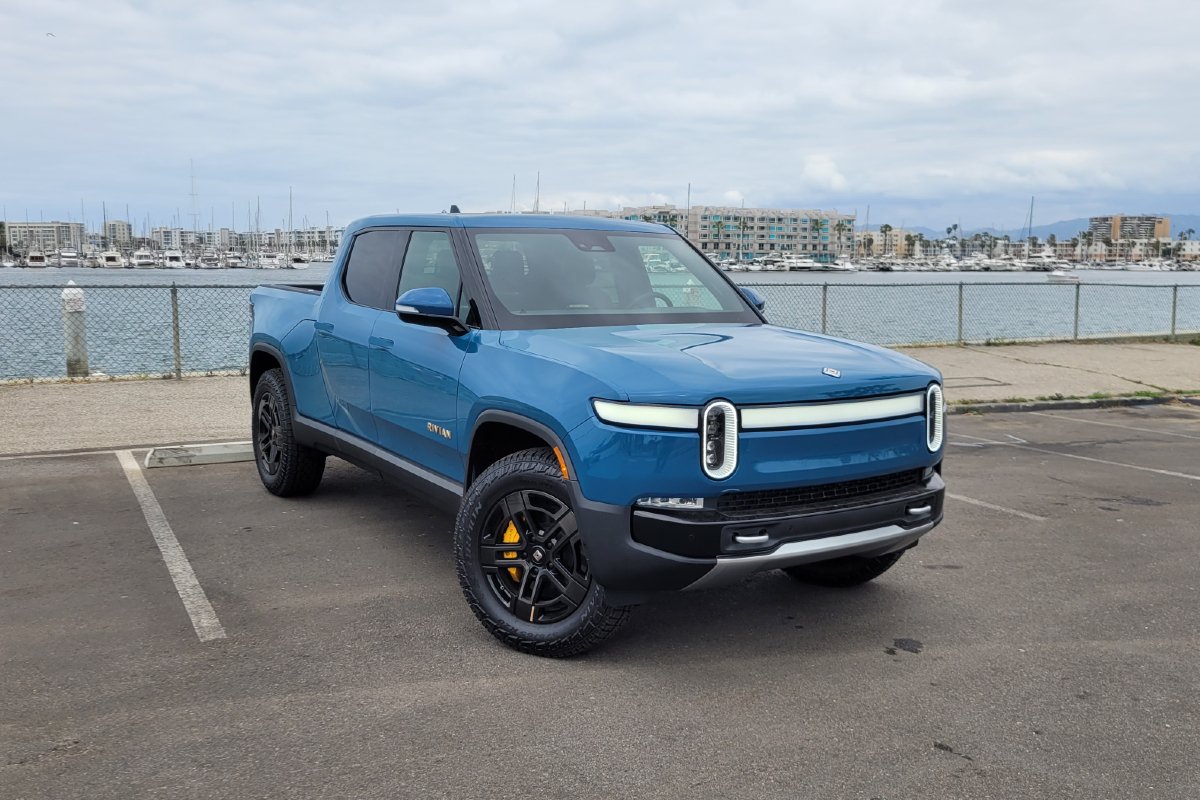
Electric ute. To many that sounds weird and just plain wrong, like , convertible submarine or vegan bacon.
But for others, the idea of a battery-powered load-lugger might be just the ticket. Electric utes are still some time from Australia in any meaningful sense (sorry, LDV) but are becoming more common in the USA, where the likes of the Ford F-150 Lightning, Chevrolet Silverado EV and even the Tesla Cybertruck are hitting the road.
There’s a fourth member of that group and it’s arguably the one that has the best chance of success in Australia – the Rivian R1T.
For those who don’t know, Rivian is an American start-up electric vehicle company, based in California, that began in 2009 with plans to build a sports car. However, company founder RJ Scaringe quickly realised that a ute (or pickup truck in America) and SUV would be better options in the US, so pivoted and revealed the R1T ute and R1S large SUV in 2018.
READ MORE: Roland Dane – Is there a market here for electric utes?
It took until late 2021 to start delivering vehicles but Rivian initially attracted interest from the likes of Ford and Amazon and became a stock market darling, but has struggled to grow consistently and recent announced a new partnership with Volkswagen Group that will allow Rivian to expand its range with the smaller, and hopefully more affordable, R2 and R3 models.
But that’s the past and future, so what about the present? Well, the R1T isn’t available in Australia yet, but I got an exclusive opportunity to drive one on a recent trip to the US.
Like Tesla, Rivian opted not to go head-to-head against the massively popular Ford F-150, Ram 1500 and Chevrolet Silverado. But instead of following Tesla lead and building something wildly unusual, the R1T is what’s considered a ‘compact pickup’ in the US but has a conventional, if very modern, design.
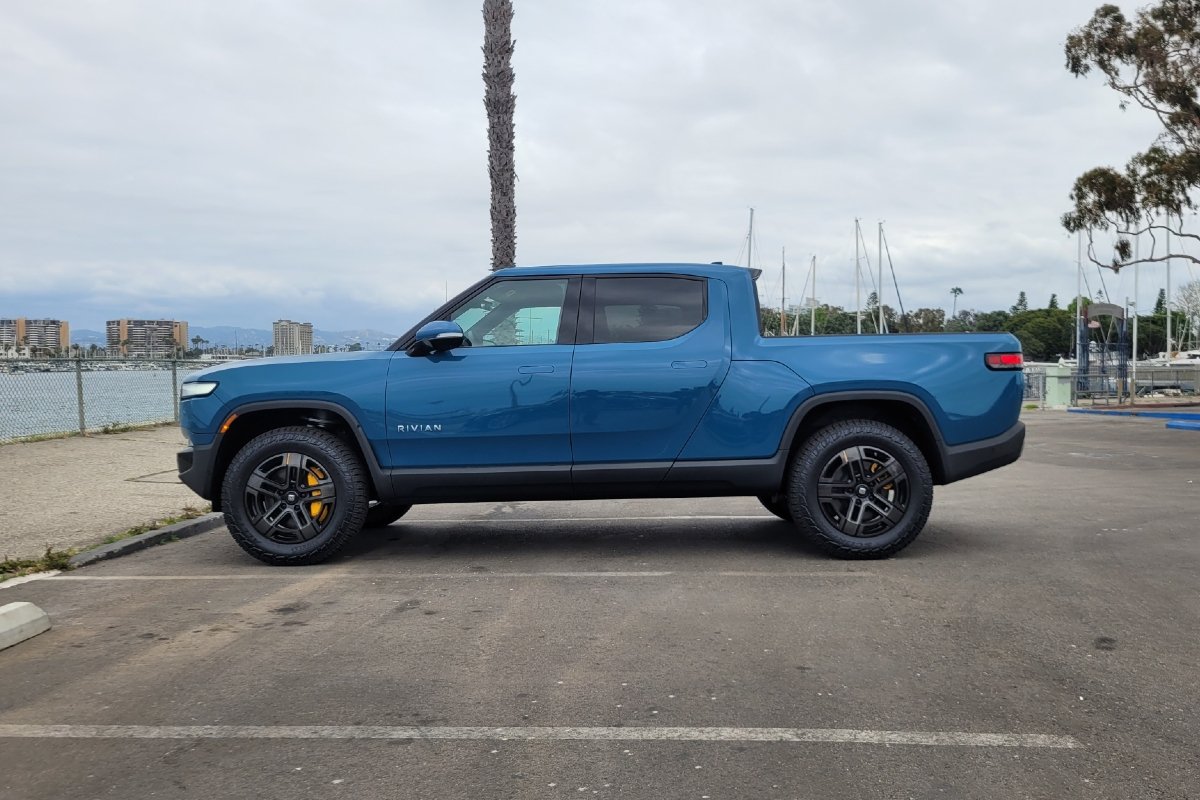
At 5514mm long, 2077mm wide and 1986mm tall the R1T stacks up nicely when compared to a Ford Ranger dual-cab, which measures 5446mm (-68mm), 1852mm (-225) and 1977mm (-9mm). That would put it into a direct contest with Australia’s most popular size of ute, like the Ranger, Toyota HiLux, Isuzu D-Max, etc, which may be incredibly competitive, but arguably gives it a better chance of success than the full-size American pickups, like the F-150 and Silverado that have a much smaller audience.
Currently in the US, there are three powertrain options for the R1T – Dual-Motor AWD, Performance Dual-Motor AWD and Quad-Motor AWD – and all are much quicker than your average dual-cab. The entry-level model the Dual-Motor AWD makes 397kW of power and 827Nm of torque and can sprint 0-60mph (96km/h) in just 4.5 seconds; for context, it takes the twin-turbo V6 Ranger Raptor 6.1 seconds to run 0-100km/h.
If that’s not quick enough, the Performance Dual-Motor AWD packs 495kW and 1123Nm and sprint time of 3.5 seconds, and the Quad-Motor makes a staggering 622kW and 1231Nm which means it takes just 3.0 seconds to run 0-60mph. That’s genuine sports car levels of performance and acceleration in a dual-cab ute.
In terms of range, the standard battery is good for up to 435km of driving, there’s a Large battery to extend that to 560km and the Max battery can take the R1T an impressive 640km on a single charge.
We tested the range-topping Quad-Motor and it’s fair to say we were impressed with its performance. It has neck-snapping performance that I haven’t experienced before in a ute, or at least not since the HSV Maloo.
But outright performance is only a small part of its repertoire, as the Quad-Motor R1T comes equipped as standard with eight ‘Drive Modes’ that can adjust the ride height, suspension stiffness, brake regeneration, stability control and torque distribution. The eight modes are – Sport, Off-Road Drift, All Purpose, Off-Road Auto, Off-Road Rock Crawl, Off-Road Rally, Conserve and Towing.
The key to these different modes is the ability to change torque distribution, as it allows for a wide variety of driving characteristics. For example, in Sport and Off-Road Drift it can send the majority of the power to just the rear wheels, allowing the R1T to perform like a rear-wheel drive vehicle. While in the Conserve setting it can send power only to the front motors to save energy. Or in the Rock Crawl setting it can send power to individual motors to help climb over obstacles.
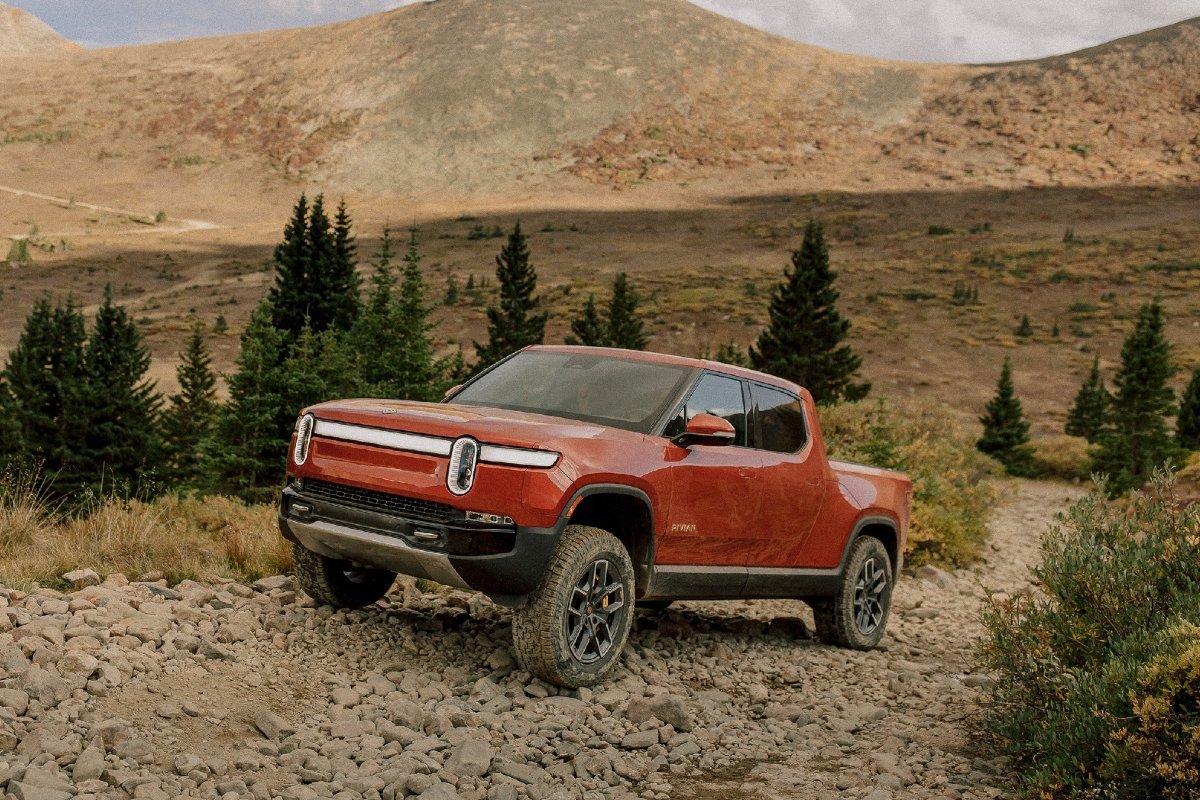
The ability to both blast-off from the traffic lights or crawl over rocks or drift around on the beach is another element that should make the R1T appealing to an Aussie audience.
While the performance is very impressive, perhaps what is more positive for a newcomer brand like Rivian is how well put together it feels. There are no squeaks or rattles, no miss-fitting panels or other poor build quality issues that have plagued some new car makers in the recent past.
Its on-road ride and handling was noticeably firm, which isn’t surprising as it weighs a whopping 3250kg, but it wasn’t uncomfortable and it steers well; certainly well enough to compete in the ute segment, which is not renowned for plush rides and razor-sharp response.
The most notable difference between the R1T and its would-be rivals like the Ranger and HiLux is the braking, which like all EVs takes advantage of the electric motors for regenerative braking – which means it captures energy from the motors and uses that to slow the vehicle rather than the braking hardware. Rivian’s regen is very powerful, so as soon as you lift off the accelerator you start to slow like you’ve applied moderate pressure to the brake pedal. This means you can drive the R1T on one-pedal, which takes some adjustment but quickly becomes second nature. It would be nice if you could have a lower, less powerful regen setting so you could coast, but instead there’s only two modes – standard and strong.
The R1T isn’t all about street performance and looking good, it has plenty of capability built into it. The tray measures 1374mm long and 1297mm wide, which is quite square, but Rivian has deliberately designed the tailgate to sit flush with the tray bed to extend the usable length to 2131mm.
Inside the tray are several practical additions, such as multiple power outlets and an air-compressor, so you can add extra pressure to your tyres if you let them down to go off-roading or pump up camping equipment.
Underneath the tray is the housing to keep the spare tyre on the off-road package, but as a spare isn’t available on all models as standard, it can be used as storage for wet or dirty items because it’s washable and has a drainage hole.
But perhaps the biggest bonus storage space the R1T has because it’s electric and sits on a flat, skateboard-like platform, is the ‘cargo tunnel’ – a bonus 331-litres of room that sits between the cabin and the tray. This is a lockable area that’s accessible from both sides externally and through the cabin via the rear seats.
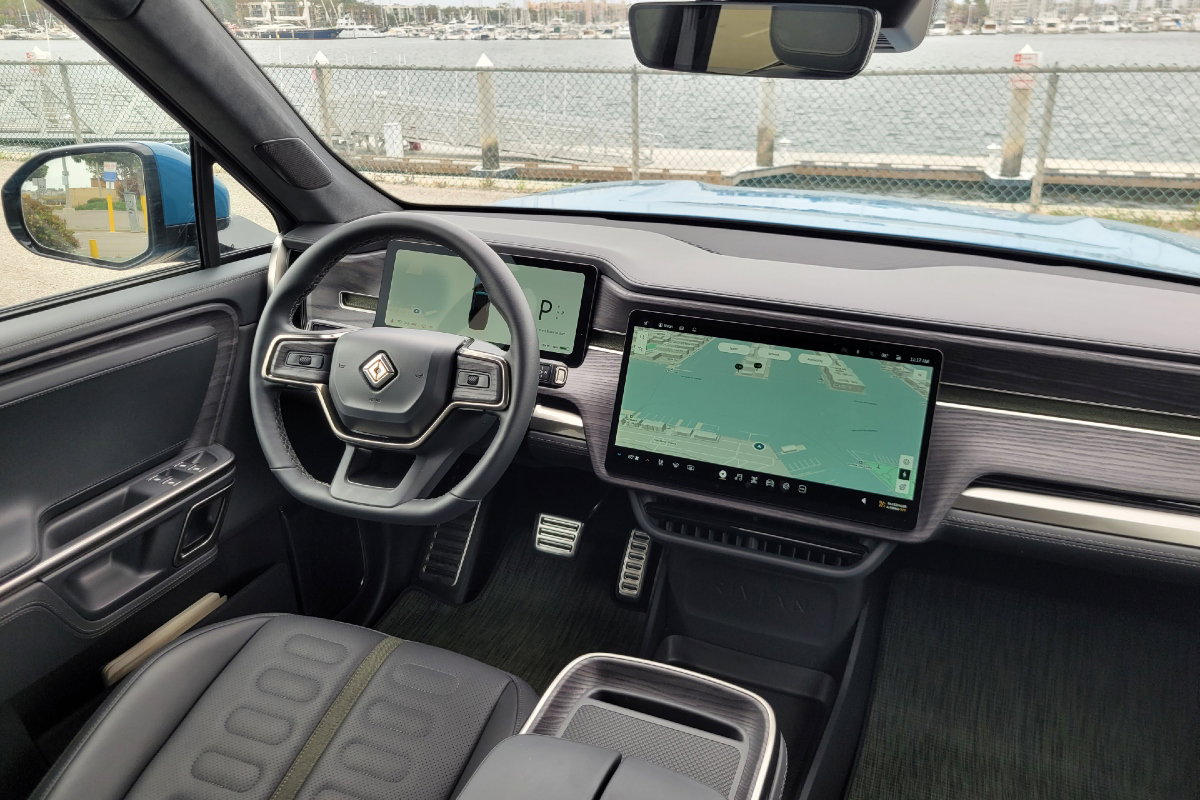
The modern and minimalist design aesthetic from the exterior runs over into the cabin, with almost every car and infotainment function operating through the central touchscreen. In fact, there are only two physical buttons in the entire cabin – a pair of dials/buttons on the steering wheel – and a pair of stalks behind the wheel (left for the indicators and right for the gear selector).
The good news for anyone reading this who wants to buy a R1T in Australia is Rivian has been on the record in the past expressing its desire to sell cars in our market. The bad news is, there’s no timeframe for that as the company needs to work on shoring up its financial future in the US before any global expansion.
Hopefully that time will come sooner rather than later, because in terms of its size and practicality but also performance it’s the kind of ute Aussies love and it might be what we need to make the switch to electric power…



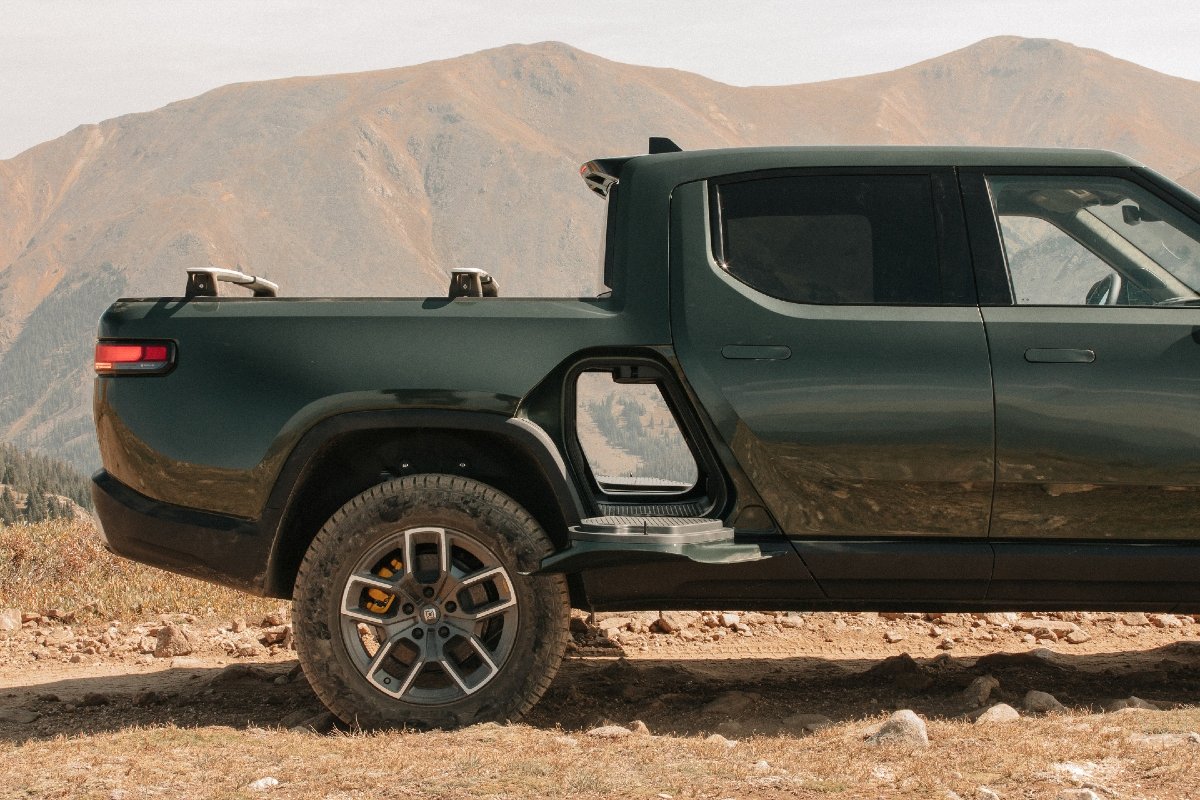
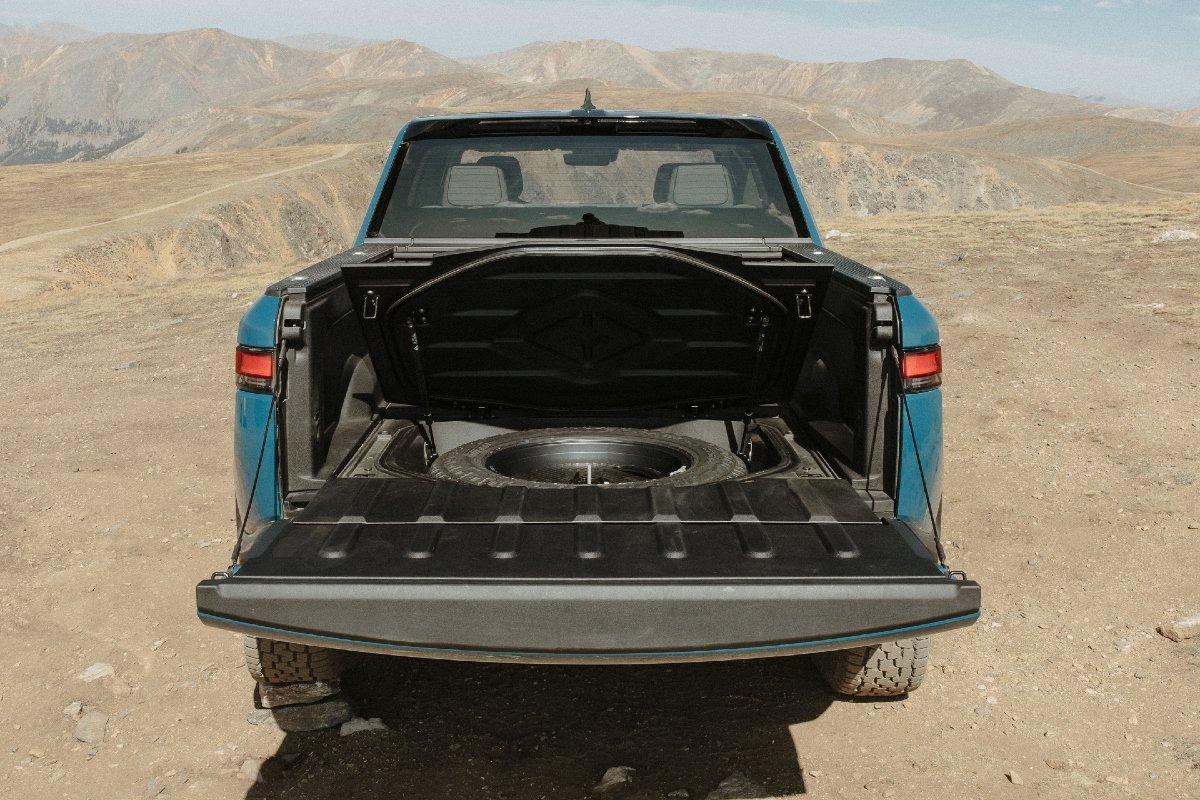
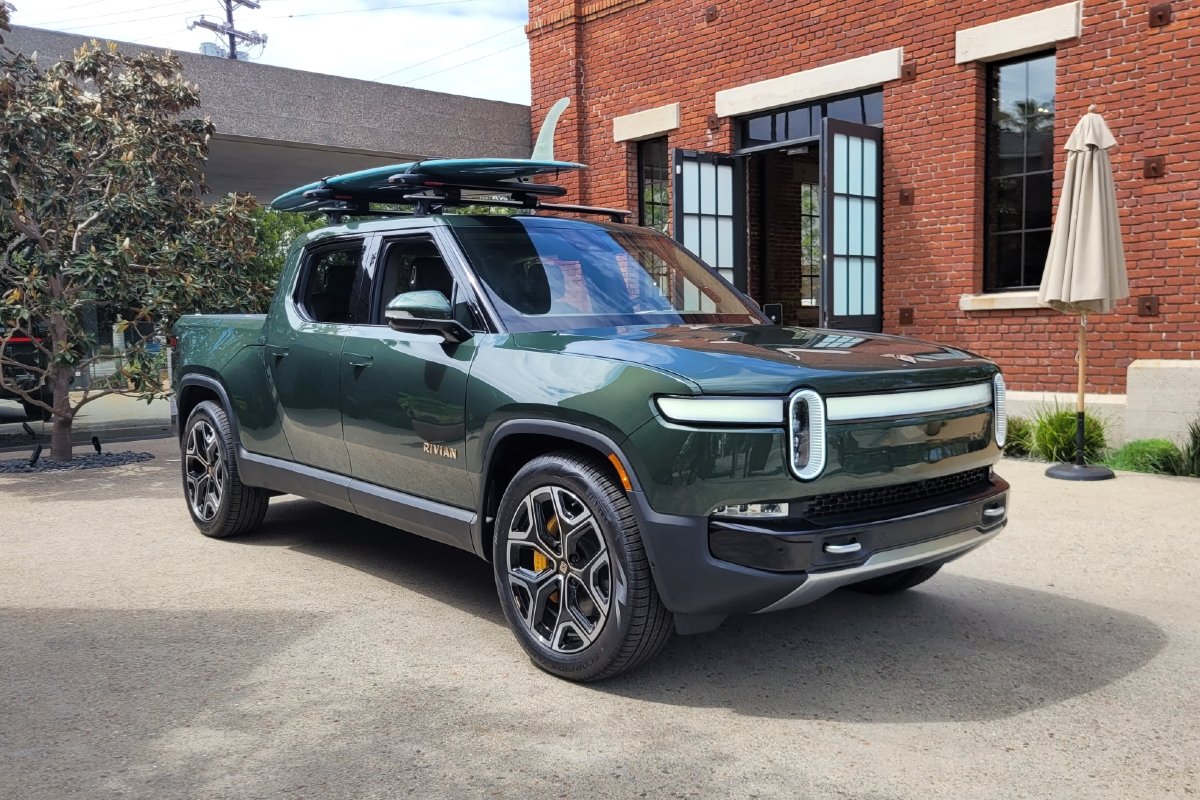










Discussion about this post